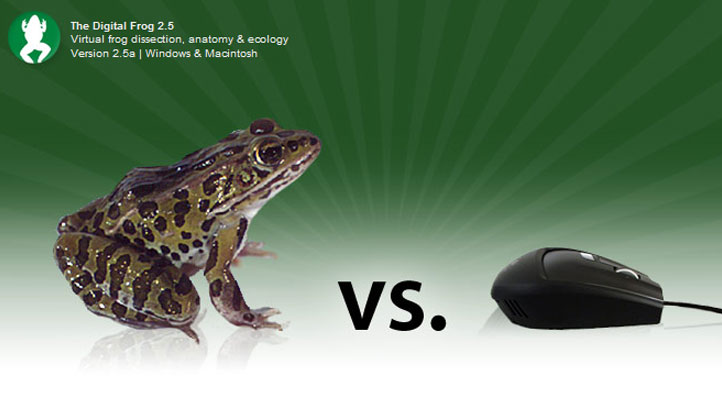


Focal students were selected to represent the range of demographics and reading levels present in each class. Data sources for this study included videos of classrooms observations, interviews with teachers, content assessments, artifacts, and the designed curriculum materials. I used case study methods (Dyson & Genishi, 2005 Stake, 1995) to investigate how teachers supported student sensemaking while working with simulations. Both teachers were experienced elementary school teachers with prior experience in the ML project. The focal curriculum, Multiple Literacies in Project-based Learning (MLs) integrates science, language arts, and math while addressing all NGSS standards and select CCSS standards.
#COMPUTER FROG DISSECTION FULL#
The following research questions guided this study: (1) How do teachers support student sensemaking while working with simulations in the context of 3rd grade project-based science? Does this support, or student response to this support, shift across the three simulations? (2) What are the teachers' perspectives regarding the use of simulations as sensemaking tools? This study took place in two third-grade classrooms with a total of 2 teachers and 54 students across a full semester of project-based science instruction. In this dissertation study, I investigated the enactment of simulation-based lessons in an elementary project-based science curriculum. However, we still have much to learn about the enactment of simulation-based lessons in elementary classrooms. All these calls support the integration of computer-based simulations into science instruction. The Next Generation Science Standards have called for students to spend more time interpreting models, including dynamic simulations. Literacy scholars have called for students to spend more time working with multimodal, digital, and interactive texts (Dalton & Proctor, 2008 Jewitt, 2008 Kress, 2009). The US Department of Education has called for educators to close the “digital use divide” by supporting all learners to actively engage in sensemaking while working with technology. In recent years, there have been many calls for engaging students in sensemaking while interpreting computerized representations. We recommend the use of virtual labs in teaching as a means of actively involving students in safer and more cost-effective scientific inquiry. This review study revealed that virtual labs are effective as they improve students’ conceptual understanding, laboratory or practical skills, and motivation and attitudes towards biology. These include cell and molecular biology topics, followed by microbiology, genetics, and other practical topics such as dissection and biotechnology. The overall findings from the reviewed literature indicated that virtual laboratories are often used on topics that seem abstract. Through a systematic analysis, we obtained 26 articles solely related to virtual lab use in biology education. We used Google Scholar, ERIC, and Web of Science electronic databases to access journal articles and conference proceeding papers. In this paper, we comprehensively review literature about the effectiveness of virtual labs in teaching and learning biology to identify the topics often taught and the linked learning outcomes. Scholars have debated whether virtual laboratories are educationally effective tools and if they should be continuously developed. (PsycINFO Database Record (c) 2012 APA, all rights reserved) The conventional class had a significant drop in the attitude scores on the post test. However, the simulated dissection group significantly outperformed the conventional dissection group on the posttest. When comparing results across classes, the simulation class and the conventional did not have significantly different pretest means. Results of the study indicated that on the achievement test, both the computer simulation and the conventional dissection classrooms experienced statistically significant improvement from pretest to posttest. This research compared the achievement, attitudes toward dissection, computer, science and school between simulation conditions versus conventional conditions. Recent research findings revealed that students who use simulation to dissect a frog outperformed those who dissected a frog conventionally. The second implication is whether dissection is immoral or unethical. One implication of the debate is that simulations can lead to equivalent learning to hands-on dissection.

Science educators and school administrators are reexaming the educational value of animal dissection in the nation's schools and are focusing on simulation as an instructional alternative.


 0 kommentar(er)
0 kommentar(er)
